ACEH TYPE LOAD CAKE
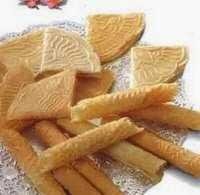
The end of Ramadan, we again feel the uforia of the feast. Speech to Idul Fitri is marked by crowded jama'ah in shopping center. All flocked down to the market to buy fashions. Although there are still many old clothes, buy new clothes that must be. In addition to new clothes, there is one more thing that is synonymous with the holiday, the cake Lebaran. Yes, not in the village not in the city, all busy making cakes for holidays. Want his house there will be guests or not, the availability of cakes at the table is absolute, must not be.
As in my area Aceh Utara in this week. From morning we have sniffed the scent that is very tempting. The mothers start making cookies in their homes. There are at least five types of cake mainstay, typical of the feast in Aceh. Besides Timphan Asokaya, of course there is. Check out the following Acehnese Lebaran pastry cake.
- Seupet
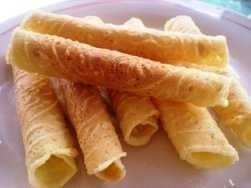
Cakes that are in great demand by Acehnese from time to time. Seupet is a pastry that does not go through the frying process. It tastes good, tasty like a cryspy chip or wafer. The shape is rounded round, a sheet that is then folded into three sides of the same shape, sometimes also rolled into a pipe-like tunnel.
The raw material of manufacture is very simple. Only flour, sugar, eggs and thick coconut milk. All the ingredients are stirred, mixed together. First sugar and eggs whipped until white / foamy, plus a little vanily to remove the fishy smell. Then add the flour and thick coconut milk to taste. The pasta dough that is not liquid and not too thick and then squeezed with a special mold, baked for five minutes with medium heat. When ripe, lifted and in hot conditions immediately formed a square or rolled fold, otherwise it will soon harden.
- Samaloyang
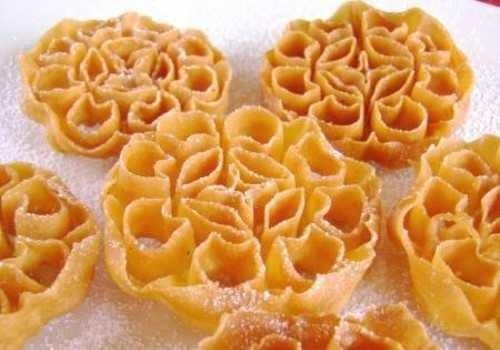
Unlike the case with Seupet, Samaloyang made from rice flour and should be fried. The material is also simple. Thick sauce, sugar and salt to taste. All mixed and stirred evenly. It should not be thick and should not be too liquid as well. Sperti make the dough of the object. It's just different prints.
There is a special mold of metal material. Originally the mold was soaked in hot oil. Then after the mold is really hot, then dipped into the dough. But not entirely drowned. Well, because of the hot mold conditions, the dough is immediately attached to the mold. That is what is then put into the frying pan. Not long, just a minute or two, the dough will slip out of the mold and float onto the oil. Because the mold must be shaken to make it easier, then some regions call this Goyang cake. The taste of this cake is crisp, sweet and crunchy when chewed.
- Bhoi
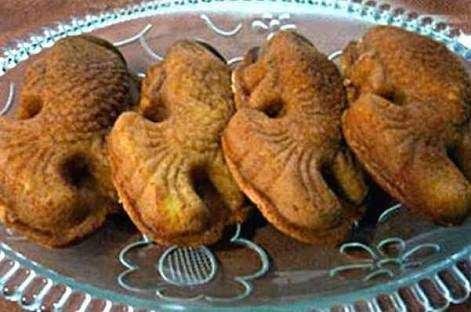
Bhoi is a typical cake of Aceh. The size is not as big as a sponge in general. Bhoi is baked in a unique and varied shaped mold. There are Bhoi form of fish, star shape, flower shape and other kinds.
Although the material is not much different, but the process of making Bhoi is relatively more complicated than others. Require a long time. First eggs and sugar beaten until frothy, added flour and butter to taste. The dough is constantly shaken until it fully expands. The dough is then poured into the mold and baked in the oven, until the color is brownish yellow then raised, the sign of Bhoi has matured. It feels soft and sweet.
- Keukarah
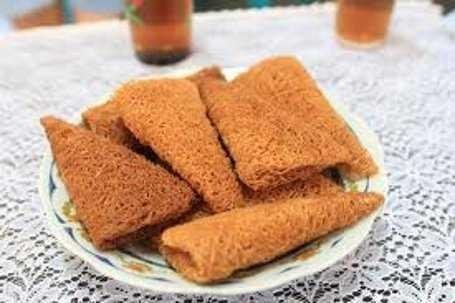
Well, this is the only cake that makes people who never see it to be confused. How not, a cake that looks like a bird's nest, barely identifiable where the first vein starts and ends. It is made of rice flour, sugar and water only. But it feels, it's! No two. Kriuk-kriuk from bite pernama until run out. And definitely want to eat again and again. Karah delicious also enjoyed with ice cream.
Cracked coconut prints are next to a coconut shell that has been given six holes on the bottom, mounted on a piece of wood as a handle. The hole the size of the base of the diameter 1 mm. The dough should not be too liquid, because it will be dispersed when dititiskan to hot oil. The dough is inserted into the container and then rushed to the top of the frying pan, shaken, if the dough in the oil has reached a certain thickness, the mold is removed again. Until the cook has evenly spread the top and bottom, then folded into a semicircle (as in the picture below). When it is folded then it is removed from the frying pan.